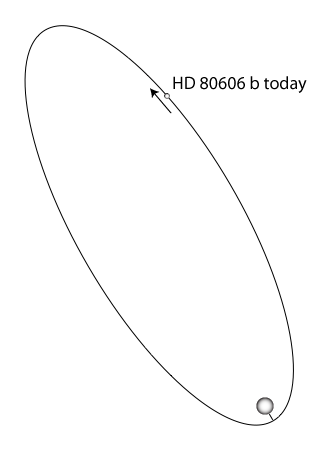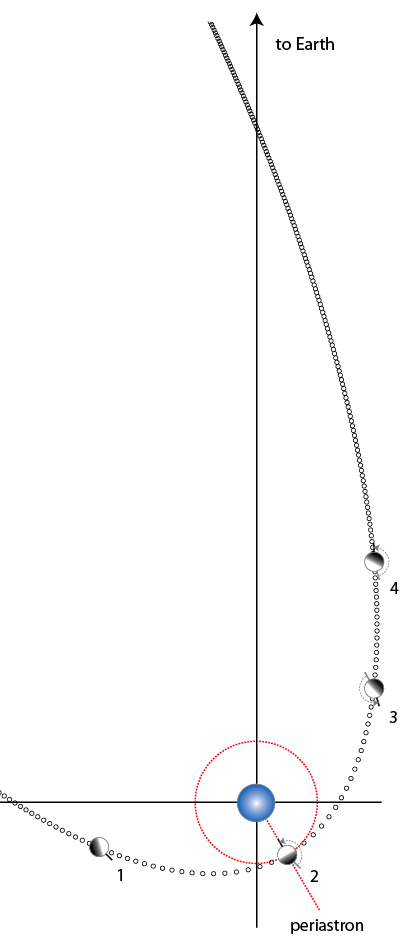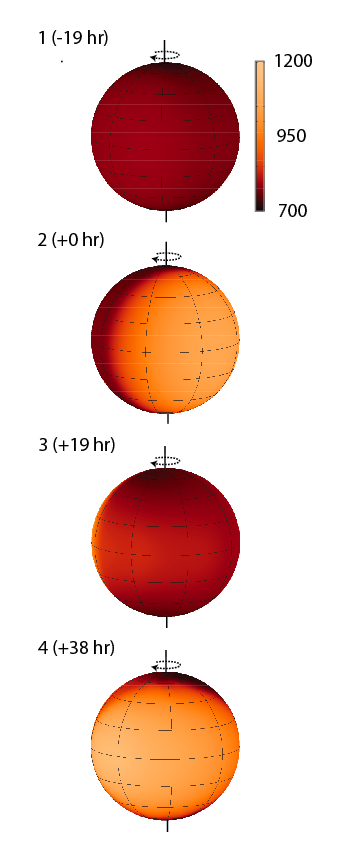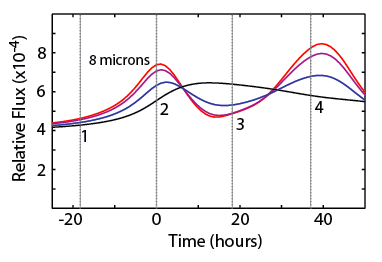
Image Source.
August 1st marked the most recent ‘606 day, which came and went without wide remark. Perhaps this was because in late Summer, HD 80606 rises and sets in near-synch the Sun, and is thus lost from the Earth’s night skies.
At the moment, HD 80606b is headed back out toward apastron.

The global storms and shockwaves that were unleashed at the beginning of August are dissipating rapidly, and the flux of heat from the planet is likely fading back down to the sullen baseline glow that arises from tidal heating.
HD 80606’s next periastron passage occurs on November 20th, and the Spitzer Space Telescope is scheduled to observe the whole event (details here). It’s going to be a big deal. Spitzer can only observe HD 80606 during two three-week windows each year, and fortunately, the Nov. 20th Periastron passage occurs during one of these windows. It’s literally the only opportunity to catch HD 80606 b’s big swing before Spitzer’s cryogen runs out in 2009.
The orbital geometry of the periastron passage looks like this:

Each marker of the orbit is separated by one hour. The prediction for the pseudo-synchronous rotation of the planet is also indicated. The planet should be spinning with a period of 36.8 hours. Jonathan Langton’s hydrodynamics code predicts what the temperature distribution on the planet should look like at each moment from Spitzer’s viewpoint in our solar system:

Transitsearch.org observers have covered a number of the HD 80606 b transit opportunities, and it seems pretty certain that the planet doesn’t transit. This isn’t surprising. The geometry of the orbit is such that when the planet crosses the plane containing the line of sight to the Earth, it’s quite a distance away from the star. Not so, however, for the secondary transit. There’s a very respectable 15% chance that Spitzer will detect a secondary transit centered two hours prior to the periastron passage.
Even if the planet doesn’t transit, we should be able to get a good sense of the orbital inclination from the shape of the light curve. If the orbit is nearly in the plane of the sky, then we should see a steady rise followed by a plateau in the 8-micron flux coming from the planet. For more nearly edge-on configurations, the flux peak should be clearly discernable. The observations are scheduled to start 20 hours prior to periastron and end 10 hours after.


Hi Greg,
This is really exciting stuff. Looking at the prediction for the pseudo-synchronous rotation of the planet combined with Jonathan Langton’s hydrodynamics code prediction of what the temperature distribution on the planet should look like at each of the four markers, makes understanding why the temperature of the hemisphere facing Spitzer would be at it’s highest at the 4th marker.
It should also be interesting to see how accurate the predicted light-curve (above) for the probable transit at periastron will be. I’m looking forward with great enthusiasm to seeing the result from Spiter after November 20th.
Best,
Eric